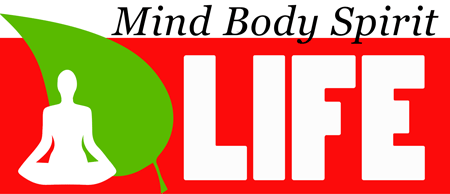Turning Healthy People Into Mental Illness Patients

DSM-5 contains an ever-expanding list of mental illnesses, along with detailed criteria that psychiatrists and other mental health professionals use for making diagnoses, in The fifth edition of the American Psychiatric Association’s (APA) diagnostic “bible” – the Diagnostic and Statistical Manual for Mental Disorders (DSM).
But many critics have emerged, including a group of opponents referred to as the International DSM-5 Response Committee, who are launching a campaign to block the manual’s release, or at least warn practitioners and patients alike to take its definitions of mental illness with a serious grain of salt …
Turning Healthy People Into Mental Illness Patients
According to some, the new version of the manual will label healthy people with a mental condition and make them prime candidates for unnecessary prescriptions of mind-altering antidepressant and antipsychotic drugs.
At the center of the anti-DSM-5 movement is Dr. Allen Frances, author of “Saving Normal: An Insider’s Revolt Against Out of Control Psychiatric Diagnosis, DSM-5, Big Pharma and the Medicalization of Ordinary Life.”
Dr. Frances actually led the task force that produced the last edition of the manual, DSM-4, which he now believes has resulted in the over-medicalization and over-diagnosis of mental illnesses.
Frances told CNN:1
“What motivates me is the experience of having inadvertently contributed to fads and psycho-diagnosis that have resulted in over-diagnosis and over-treatment … Some of this happened during DSM IV, even though we were more conservative with that document than they’ve been with DSM-5, with its many changes that are unsupported and, in some cases, quite reckless.”
Normal Emotions Classified as Disorders?
The soon-to-be-released DSM-5 contains a myriad of questionable new disorders that could result in turning virtually anyone experiencing normal human life challenges and emotions into a patient.
For instance, “somatic symptom disorder” describes a person who has spent six months or more thinking about and being anxious about their medical issues. This, Frances explained, would incorrectly apply to about one in four people with chronic pain or irritable bowel syndrome, he told CNN.
Then there is “Internet use disorder,” which will be recommended as an area that needs further study in DSM-5. Internet use disorder includes many characteristics of any addiction, such as experiencing withdrawal symptoms when the object of addiction is taken away, an inability to control its use, developing a tolerance to it, deceiving family members about its use, and losing interests in other hobbies.
In this case, of course, the object of abuse is the Internet. By making Internet addiction a certifiable mental illness, it then becomes treatable by drugs and billable through insurance companies―and morphs into a “disorder” that is likely something that will stigmatize your health records for the rest of your life.
Millions of Americans, including me, use the Internet on a daily basis, many for hours on end, so the potential treatment market for “Internet use disorder” is huge.
Even Grief is a Mental ‘Illness’
Also according to DSM-5, you may actually have an “Adjustment Disorder” related to bereavement if:2
“Following the death of a close family member or close friend, the individual experiences on more days than not intense yearning or longing for the deceased, intense sorrow and emotional pain, or preoccupation with the deceased or the circumstances of the death for at least 12 months (or 6 months for children). The person may also display difficulty accepting the death, intense anger over the loss, a diminished sense of self, a feeling that life is empty, or difficulty planning for the future or engaging in activities or relationships.”
These all sound like normal reactions following the death of a loved one, but the DSM-5 also proposes further study for Persistent Complex Bereavement Disorder, with the purpose being to “develop the best empirically-based set of symptoms to characterize individuals with bereavement-related disorders.”
Close to 2.5 million Americans die each year, and the number of those experiencing grief as a result is far higher. This is the market the pharmaceutical industry stands to gain, thanks to the APA’s trigger-happy attitude when it comes to labeling normal human emotions as psychiatric “disorders.”
Many of the Mental Illnesses in the DSM are Subjective
It’s almost impossible to see a psychiatrist today without being diagnosed with a mental disorder because so many behavior variations are described as pathology. And you have very high chance – approaching 100% — of emerging from your psychiatrist’s office with a prescription in hand. Writing a prescription is, of course, much faster than engaging in behavioral or lifestyle strategies, but it’s also a far more lucrative approach for the conventional model.
What makes this scenario all the more frustrating is the fact that virtually none of the mental disorders described in the DSM can be objectively measured by empirical tests.3 In other words, they’re completely subjective. Mental illness symptoms within this manual are arbitrarily assigned by a subjective voting system by a psychiatric panel. So, they’re essentially making up diseases to fit the drugs—not the other way around. Following are some actual “diseases” in the DSM:
•Do you shop too much? You might have Compulsive Shopping Disorder.
•Do you have a difficult time with multiplication? You could be suffering from Dyscalculia.
•Spending too much time at the gym? You’d better see someone for your Bigorexia or Muscle Dysmorphia.
•And my favorite—are your terrified by the number 13? You could have Triskaidekaphobia!
Neurologists Say ADHD Drugs Should Not be Used as ‘Study Drugs’
Adderall, which contains amphetamine (aka “speed”) and dextroamphetamine, is a stimulant drug that is often prescribed to improve attention and focus and reduce impulsiveness and hyperactivity in patients with ADHD.
But because of its stimulant properties, it’s become a black-market drug of choice for college kids looking to pull all-nighters to boost their grades. An estimated one in 10 college students abuse Adderall as a way to gain a competitive edge in their studies, often comparing it to athletes who use steroids.4 But the pills have a dark side, often quickly leading to addiction and causing other side effects like mood swings, insomnia, depression and panic attacks.
College students who use Adderall as a “study drug” acquired from the black market is a large enough problem on its own, but in some cases physicians prescribe these drugs to healthy kids for this very same purpose, a trend sometimes called “pediatric neuroenhancement.” The practice has become so commonplace that the American Academy of Neurology has released a formal statement against it, noting:5
“In children and adolescents, neuroenhancement appears to be increasing in parallel to the rising rates of attention-deficit disorder diagnoses and stimulant medication prescriptions, and the opportunities for medication diversion. Pediatric neuroenhancement remains a particularly unsettled and value-laden practice, often without appropriate goals or justification.
Pediatric neuroenhancement presents its own ethical, social, legal, and developmental issues, including the fiduciary responsibility of physicians caring for children, the special integrity of the doctor–child–parent relationship, the vulnerability of children to various forms of coercion, distributive justice in school settings, and the moral obligation of physicians to prevent misuse of medication.… neuroenhancement in legally and developmentally nonautonomous children and adolescents without a diagnosis of a neurologic disorder is not justifiable.”
Even if the drugs do give students a competitive edge against their non-medicated peers, it’s unclear how any physician would consider this worth the risk. Drugs like Adderall are powerful, mind-altering medications linked to growth suppression, increased blood pressure and psychotic episodes. In children, the impacts of their long-term use are completely unknown, although given the drug’s addictive nature, it’s quite possible these kids could become life-long addicts.



